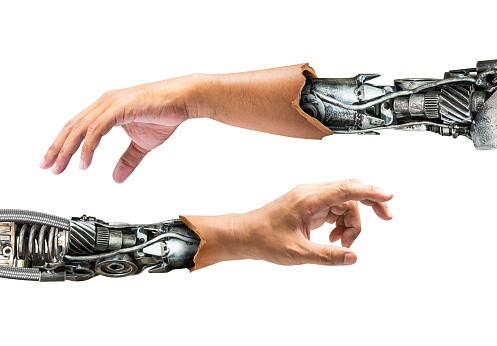
Drawing inspiration from skeletal muscles and sensory skins in vertebrate animals, a group of experts has presented a design strategy for soft robots composed of an electronic skin and an artificial muscle.
Skin-Inspired Robots
At the University of North Carolina at Chapel Hill, a team of researchers has developed innovative soft robots with design features which enable them to sense their surroundings and adapt to their environment in real-time. The details of their study are discussed in the paper "Skin-inspired, sensory robots for electronic implants."
Led by Lin Zhang, a postdoctoral fellow in UNC's Department of Applied Physical Sciences, the research team collaborated with experts from the Bai Lab and the Weldon School of Biomedical Engineering at Purdue University. They designed robots integrated with multifunctional sensing using an in-situ solution-based method.
The new robots are made to resemble the way muscles and skin work together in vertebrate animals, allowing them to be more effective and safer to use inside the human body. The electronic skin used in designing the robot is composed of different sensing materials, like silver nanowires and conductive polymers, within a flexible base component. These components enable the robot to closely resemble the complex sensory function of real human skin.
READ ALSO: Novel Brainless Soft Robot Works With Physical Intelligence To Navigate Dynamic, Complex Mazes
Capabilities of the New Sensory Robot
The enhanced robots have the capability to perform a wide variety of well-controlled motions, such as expanding, bending, and twisting inside biological systems. Scientists designed them to gently attach to human tissues with reduced stress and biological damage. Drawing inspiration from natural shapes like seed pods and starfish, the soft robots can change their structure to efficiently carry out various tasks.
Such features make the new robots highly adaptable and useful for improving medical diagnostics and treatments. They are capable of continuously monitoring internal conditions. They can also offer treatments based on real-time data like electrical stimulation.
Another feature of the robot is that it can be swallowed to monitor pH levels and deliver drugs for improved treatment outcomes for gastrointestinal conditions. Additionally, it can gently attach to a beating heart to allow continuous monitoring of electrophysiological activities and measurement of cardiac contraction. This allows the experts to provide electrical stimulation for regulated heart rhythm.
The robotic device can also wrap around the human bladder to measure its volume. It also offers enhanced patient care and treatment efficacy by providing electrical stimulation to treat the overactive bladder. Moreover, another component of the robot twists around a blood vessel to accurately monitor blood pressure in real-time, providing a precise and non-invasive monitoring solution.
Zhang and colleagues tested the innovative robot on mice to examine its capability to perform biological functions effectively. The positive result demonstrated its potential as a next-generation cardiac implant with a promising future in real-world medical applications. They have proven the capability of the sensory robot in revolutionizing the treatment of chronic diseases and enhancing patient outcomes.
According to research principal investigator Wubin Bai, the innovative approach to designing the robot can broaden the scope of medical devices. It also highlights the potential for future advancements in the mutual interaction between biological tissues and soft implantable robotic devices.
In the future, the team aims for long-term stability and biocompatibility in dynamic physiological systems.
RELATED ARTICLE : Researchers Successfully Combine Analog and Digital Functions on Soft Robotic Control System
Check out more news and information on Soft Robot in Science Times.










